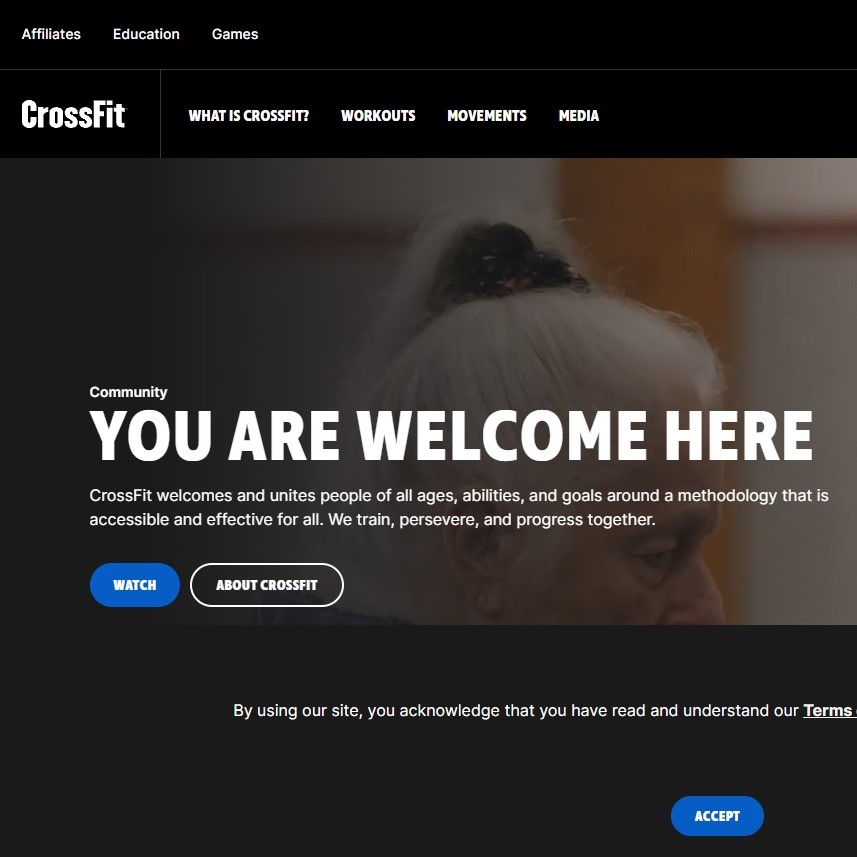Crossfit has taken the fitness world by storm with its high-intensity workouts and community-driven approach. However, some people have raised concerns about the potential risks and drawbacks of this popular exercise program.
In this article, we will explore the health benefits of Crossfit, what experts have to say about it, and ultimately answer the question: Is Crossfit bad for you? Whether you’re a seasoned Crossfit enthusiast or simply curious about this exercise trend, we’ll provide you with the information you need to make an informed decision about your fitness routine.
What is Crossfit?

CrossFit is a high-intensity fitness program that involves a combination of weightlifting, gymnastics, and cardio exercises. It was founded in 2000 by Greg Glassman and has gained popularity in recent years, with CrossFit gyms opening up all over the world.
The workouts are designed to be challenging and varied, with the aim of improving overall fitness and functional movement.
Pros and Cons
Pros:
- Crossfit is a high-intensity workout that can help improve cardiovascular health, build strength and endurance, and burn calories.
- The community aspect of Crossfit can provide motivation and support for individuals looking to improve their fitness.
- Crossfit workouts are constantly varied, which can help prevent boredom and challenge the body in different ways.
Cons:
- The high-intensity nature of Crossfit can increase the risk of injury, particularly for beginners or those with pre-existing conditions.
- Some critics argue that the focus on competition and pushing oneself to the limit can lead to overtraining and burnout.
- Crossfit can be expensive, as many gyms require membership fees and specialized equipment.
Health Benefits of Crossfit
Crossfit is a high-intensity fitness program that involves a combination of weightlifting, gymnastics, and cardiovascular exercises. It is designed to improve overall fitness and strength by focusing on functional movements that mimic activities of daily living.
Some potential health benefits of participating in Crossfit or other high-intensity interval training (HIIT) programs may include:
- Improved cardiovascular health: HIIT programs like Crossfit can improve cardiovascular fitness and reduce the risk of heart disease. A study published in the Journal of Fitness Research found that six weeks of HIIT training significantly improved blood pressure, body composition, and overall fitness in overweight adults.
- Increased strength and muscle mass: Crossfit workouts typically involve a combination of weightlifting and bodyweight exercises, which can help increase muscle strength and mass. A study published in the Journal of Sports Science & Medicine found that eight weeks of Crossfit training resulted in significant increases in upper and lower body strength.
- Enhanced weight loss: HIIT programs have been shown to be effective for weight loss due to their high calorie-burning potential. A study published in the Journal of Diabetes Research found that 12 weeks of HIIT training significantly reduced body fat percentage and improved insulin sensitivity in overweight adults.
It is important to note that like any exercise program, Crossfit does come with some risks and potential downsides, such as an increased risk of injury if proper form and technique are not used during exercises.
It is important to work with a qualified Crossfit coach and start at an appropriate level for your fitness level and experience.
Who Should Avoid Crossfit?
There are certain groups of individuals who may need to avoid or be cautious with Crossfit training. Here are some examples:
- Individuals with pre-existing medical conditions: People with pre-existing medical conditions such as heart disease, diabetes, high blood pressure, or joint problems should consult with their doctor before starting a Crossfit program. They may need modifications to their exercise routine or even avoid certain movements altogether to prevent further health complications.
- Pregnant women: Pregnant women who were not doing Crossfit before pregnancy should consult with their doctor before starting a Crossfit program. While exercise is generally safe and beneficial during pregnancy, Crossfit may need to be modified to prevent any risks to the mother or baby.
- Beginners: People who are new to exercise or have not been active in a long time should start slowly and gradually increase the intensity and frequency of their workouts. Crossfit can be a high-intensity form of exercise and jumping straight into it without proper guidance can increase the risk of injury.
- Individuals with a history of injury: People who have a history of injury, particularly joint or back injuries, should be cautious when doing Crossfit. It is important to work with a qualified coach who can help modify the exercises and prevent further injury.
Alternatives to Crossfit
Three alternatives to Crossfit include:
- Pilates: Pilates is a low-impact exercise that focuses on strengthening the core muscles, improving flexibility, and building lean muscle. It emphasizes controlled movements, proper breathing techniques, and body awareness.
- Yoga: Yoga is a form of exercise that involves physical postures, breathing techniques, and meditation. It can help improve flexibility, balance, and strength, as well as reduce stress and anxiety.
- High-Intensity Interval Training (HIIT): HIIT involves short bursts of intense exercise followed by periods of rest or active recovery. It can help improve cardiovascular health, increase strength, and promote fat loss. HIIT workouts can be customized to an individual’s fitness level and can be done with little or no equipment.
FAQ
Is Crossfit only for athletes and advanced fitness enthusiasts?
No, Crossfit is for anyone regardless of their fitness level or athletic ability. It can be adapted to suit the needs and abilities of each individual.
Will I get injured doing Crossfit?
Like any physical activity, there is always a risk of injury in Crossfit. However, proper form, appropriate scaling of workouts, and listening to your body can greatly reduce the risk of injury.
Is Crossfit a good way to lose weight?
Yes, Crossfit can be an effective way to lose weight as it combines strength training and cardio in a high-intensity workout that burns calories and builds muscle.
Can I do Crossfit if I have a pre-existing medical condition?
It depends on the condition and its severity. It’s important to consult with a doctor before starting any exercise program, including Crossfit, to ensure it is safe and appropriate for your individual needs.
Is Crossfit expensive?
Crossfit can be more expensive than other gym memberships, but it typically includes personal coaching and a supportive community that can help individuals achieve their fitness goals. Prices can vary depending on location and gym.
Conclusion: Is Crossfit bad for you?
The question of whether Crossfit is bad for you is a complex one with no clear-cut answer. While some experts point to potential risks associated with the high-intensity nature of the workouts, others highlight the benefits of improved fitness, strength, and endurance.
Ultimately, the decision to participate in Crossfit should be made based on individual health status and personal preferences. As with any exercise program, it is important to consult with a medical professional before starting and to listen to your body to avoid injury.
With proper training and precautions, Crossfit can be a challenging and rewarding fitness option for many individuals.
References
1. Claudino JG, Gabbett TJ, Bourgeois F, et al. CrossFit overview: Systematic review and meta-analysis. Sports Medicine-Open. 2018;4(1):1-14. https://sportsmedicine-open.springeropen.com
2. Babiash PE. Determining the engergy expenditure and relative intensity of two crossfit workouts. Master thesis. University Of Wisconsin-La Crosse; 2013. https://minds.wisconsin.edu/handle/1793/66173
3. Ryan Shuda M, Feito Y. Challenge, commitment, community, and empowerment: Factors that promote the adoption of CrossFit as a training program. Transformation. 2017;1:1-14. https://www.researchgate.net
4. Haddock CK, Poston WS, Heinrich KM, Jahnke SA, Jitnarin N. The benefits of high-intensity functional training fitness programs for military personnel. Military Medicine. 2016;181(11-12):e1508-e1514. https://academic.oup.com/milmed/article-abstract/181/11-12/e1508/4158549
5. Montalvo AM, Shaefer H, Rodriguez B, Li T, Epnere K, Myer GD. Retrospective injury epidemiology and risk factors for injury in CrossFit. Journal of Sports Science & Medicine. 2017;16(1):53. https://www.ncbi.nlm.nih.gov/pmc/articles/PMC5358031/
6. Peterson KM. Overtraining, burnout, injury, and retirement. In: Hays KF, ed. Performance psychology in action: A casebook for working with athletes, performing artists, business leaders, and professionals in high-risk occupations. American Psychological Association; 2009:225–243. https://psycnet.apa.org/record/2009-05799-011
7. Choy RY. CrossFit Stasis at a crossroad. Vanier College BDC Case Challenge; 2018. https://www.vaniercollege.qc.ca
8. Butcher SJ, Judd TB, Benko CR, Horvey KJ, Pshyk AD. Relative intensity of two types of crossfit exercise: Acute circuit and high-intensity interval exercise. Journal of Fitness Research. 2015;4(2). https://research.usc.edu.au/esploro
9. Schlegel P. CrossFit® training strategies from the perspective of concurrent training: A systematic review. Journal of Sports Science & Medicine. 2020;19(4):670. https://www.ncbi.nlm.nih.gov/pmc/articles/PMC7675627/
10. Airin S, Linoby A, Mohamad Zaki MS, et al. The effects of high-intensity interval training and continuous training on weight loss and body composition in overweight females. presented at: Proceedings Of The International Colloquium On Sports Science, Exercise, Engineering And Technology; 2014. https://link.springer.com/chapter/10.1007/978-981-287-107-7_42
11. Holtermann A, Coenen P, Krause N. The paradoxical health effects of occupational versus leisure-time physical activity. In: Theorell T, ed. Handbook of socioeconomic determinants of occupational health: from macro-level to micro-level evidence. Springer; 2020:241-267. https://link.springer.com/referenceworkentry/10.1007/978-3-030-31438-5_6
12. Prewitt-White T, Connolly CP, Feito Y, et al. Breaking barriers: Women’s experiences of crossfit training during pregnancy. Women in Sport and Physical Activity Journal. 2018;26(1):33-42. https://journals.humankinetics.com/view/journals/wspaj/26/1/article-p33.xml
13. Nied RJ, Franklin BA. Promoting and prescribing exercise in the elderly. American Family Physician. 2002;65(3):419. https://www.aafp.org/afp/2002/0201/p419
14. Chachula LA, Cameron KL, Svoboda SJ. Association of prior injury with the report of new injuries sustained during CrossFit training. Athletic Training & Sports Health Care. 2016;8(1):28-34. https://journals.healio.com/doi/abs/10.3928/19425864-20151119-02
Check out some of our recently published articles:

Leave a Reply